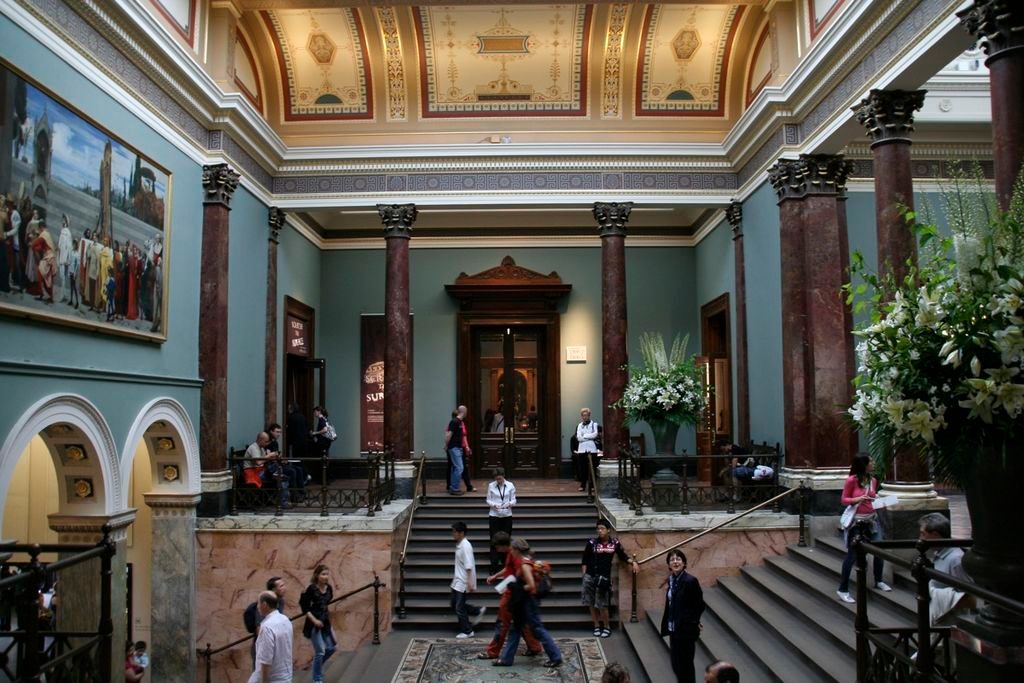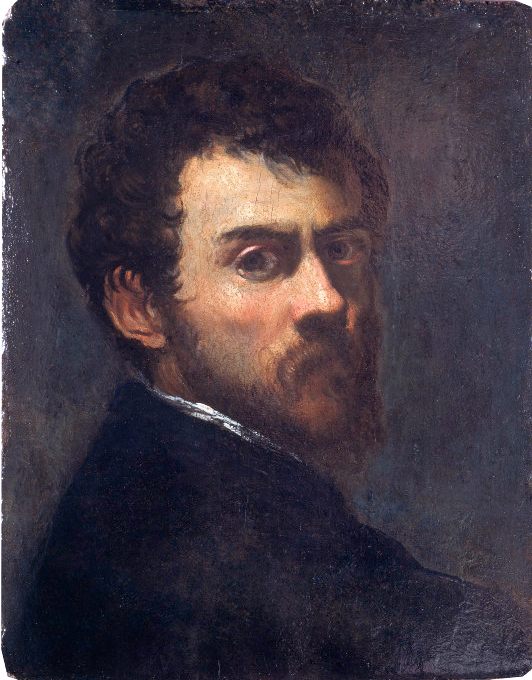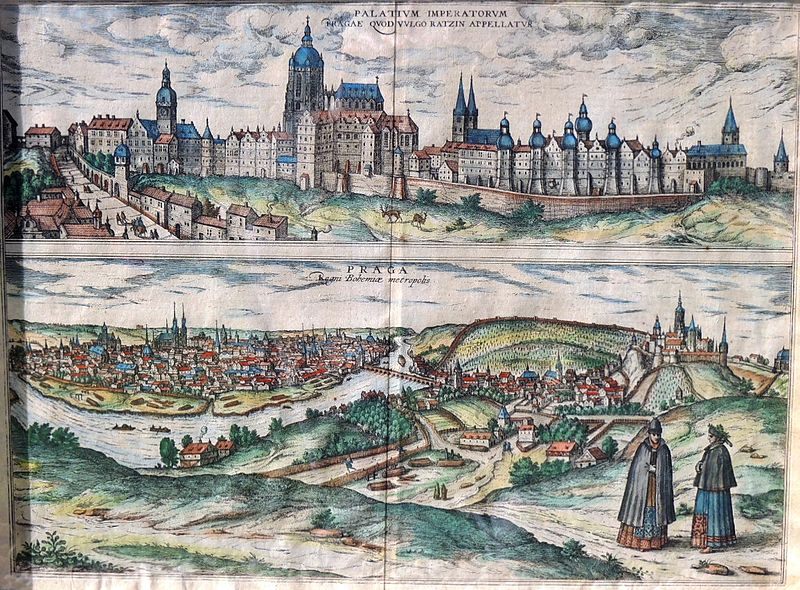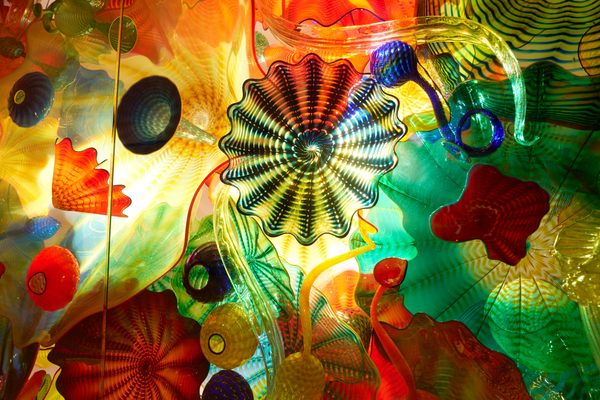What Happened to the Bottom Third of a Famous Tintoretto Artwork?

Jacopo Tintoretto’s The Origin of the Milky Way. (Photo: Public Domain/WikiCommons)
In London’s National Gallery, in a room between the main vestibule and the Sainsbury Wing, hangs a painting of a nude woman against a brilliant blue sky, rendered in indigo-washed lapis and malachite—Jacopo Tintoretto’s high-energy Renaissance masterpiece, The Origin of the Milky Way. The canvas is bold, vivid, dramatic, its figures poised in the dualistic moment between initiating an action and reversing it—the nude woman’s raised arm beckons but also seems to push away, the man both retreats and advances.
Beside a heavy gilt frame, a white card lists basic facts: dates, dimensions, subject matter. And, as demurely stated on the National Gallery’s Website: “Lilies were once present at the base of the painting, until a part of the original canvas was cut off.”
This is a classic bit of British understatement and minimization, where a “bit of damp” could mean a monsoon, and ”lilies once present” means ”somebody hacked off the bottom third of the painting, which included people, flowers, and a plinth—and we have no idea who or why.”

Inside London’s National Gallery, where the Tintoretto hangs. (Photo: Rudolf Schuba/WikiCommons CC BY 2.0)
The painting—the whole painting—was commissioned by Emperor Rudolph II as part of a series on the life of Hercules. When Hercules was born, he had strength greater than a mere mortal, but being half human was not immortal like a god. To remedy this, Jupiter carried the infant Hercules to where Juno was sleeping, and allowed him to suckle from her breast. His powerful sucking awoke the goddess, and she pushed him away. Milk from her breast sprayed across the sky, forming the Milky Way. This much is depicted in the National Gallery.
However, there was a more obscure version of the legend which was popular in Tintoretto’s home city, Venice. In this Byzantine-influenced telling, Juno’s milk sprayed down as well as up, and in so doing created the lily. This version of the myth was closely associated with one of Tintoretto’s most important patrons, the doctor and astrologer Tommaso Rangoni Gianotti, to such an extent that it was depicted on the obverse of a medal honoring him during his lifetime (now in the possession of London’s Victoria and Albert Museum). That’s the version Tintoretto painted. The leafy sprays apparent at the lower right edge of the painting are the tops of lilies which grew out of a nude female figure reclining on the ground—the goddess of Earth.
This is what the whole painting probably looked like:

A clue as to the Tintoretto’s missing portion? (Photo: Courtesy Romie Stott)
It’s a photo of a copy of a photo of a small oil painting which circulated around the German fine art market in the 1920s; that painting’s creator and current location are unknown. (It’s entirely possible the painting was destroyed during World War II.) We can be pretty sure it’s a reproduction of the Tintoretto, rather than an imaginative enlargement, because Tintoretto’s son made a (pretty bad) sketch with the same composition, as did Rudolph II’s court painter (which suggests Rudolph probably wasn’t the executor of the crop).
The remaining painting, the one in the gallery, gives some clues to its own mutilation, though they’re subtle. Putti, the chubby baby angels all over Renaissance art, aren’t usually half-out of frame; if a painter wants to show a partial one, it’s going to lean on a ledge or peer out from behind a cloud. Then there are those leaves in the lower right-hand corner; what are vines doing in the clouds? Why are there extraneous streams of milk firing down from the un-suckled breast? Some historically helpful soul painted on extra stars to “fix” the crop-created composition problems, but these were removed during a restoration in the 1970s.

Tintoretto’s Self-Portrait, c. 1548. (Photo: Public Domain/WikiCommons)
Mostly, for it to be obvious what’s missing, you have to know two things about Tintoretto. One is that in his vertical canvases of similar size, his compositions spiral around a diagonal. See:Ascension of Christ; Madonna col Bambino e i Santi Cecilia, Marina, Teodoro, Cosma e Damiano; San Marco salva un saraceno. The second is that he was not in the habit of passing up chances to paint reclining female nudes from mythology, which may be part of what attracted him to this subject. Rudolph II was similarly inclined in his artistic preferences. Given the opportunity to have a (tasteful!) second naked lady on the ground, it’s hard to believe either would give it a pass.
The lower half of the painting went missing before 1727, at which time it is listed in a catalogue of Louis XV’s Palais Royal at its current size. Before that, it was in the collection of Marquis de Seignelay, who died in 1690 and gave it to the Palais Royal. Before that, we don’t know who had it. It was folded and delivered to Emperor Rudolph II in Prague around 1575, but had already left Prague by 1648, when Swedish troops looted Prague Castle. (They were pretty good about cataloguing and preserving their artistic booty, and they didn’t mention it.) That leaves around 50 years, maybe more, unaccounted for.

Prague Castle, c. 1595, where it is believed the Tintoretto was housed for a period. (Photo: Public Domain/WikiCommons)
Since we don’t know who cropped the painting, we can only speculate as to the why. A few possibilities:
1. Somebody thought it would fit better over a mantle if it were shorter.
2. It was damaged, perhaps during the Thirty Years War (which events at Prague Castle arguably incited), and this was a salvage job
3. It was a purely editorial decision by someone who didn’t know or like the obscure version of the Hercules myth, and therefore felt the lilies were extraneous and confusing.

Tintoretto’s Suzanna and the Elders. (Photo: Public Domain/WikiCommons)
Supporting the point of view of this third hypothetical someone, Tintoretto was terrible at drawing greenery, or at least not very interested. This was not an artist who lovingly lingered on a leaf. Most Tintoretto paintings omit plants entirely, and when the subject matter is unavoidably pastoral, as in The Flight Into Egypt and both versions of Suzanna and the Elders, Tintoretto took an approach to foliage that was somewhere between “happy little trees” and clip art. If the German reproduction and remaining twigs are to be believed, it’s reasonable to assume his lilies looked more like a smudgy rosebush.
Whatever the reason for The Origin of the Milky Way’s disfigurement, it’s hard to lament its missing third in the same way we grieve the empty frame of Rembrandt’s Storm on the Sea of Galilee—not when the remaining painting is so striking. Perhaps it’s the rectangular version of Venus de Milo’s missing arms, absent and everywhere. Next time you’re near Trafalgar Square, you can see for yourself. In the meantime, next time you spill milk on the ground, spare a thought for Tintoretto.

























Follow us on Twitter to get the latest on the world's hidden wonders.
Like us on Facebook to get the latest on the world's hidden wonders.
Follow us on Twitter Like us on Facebook